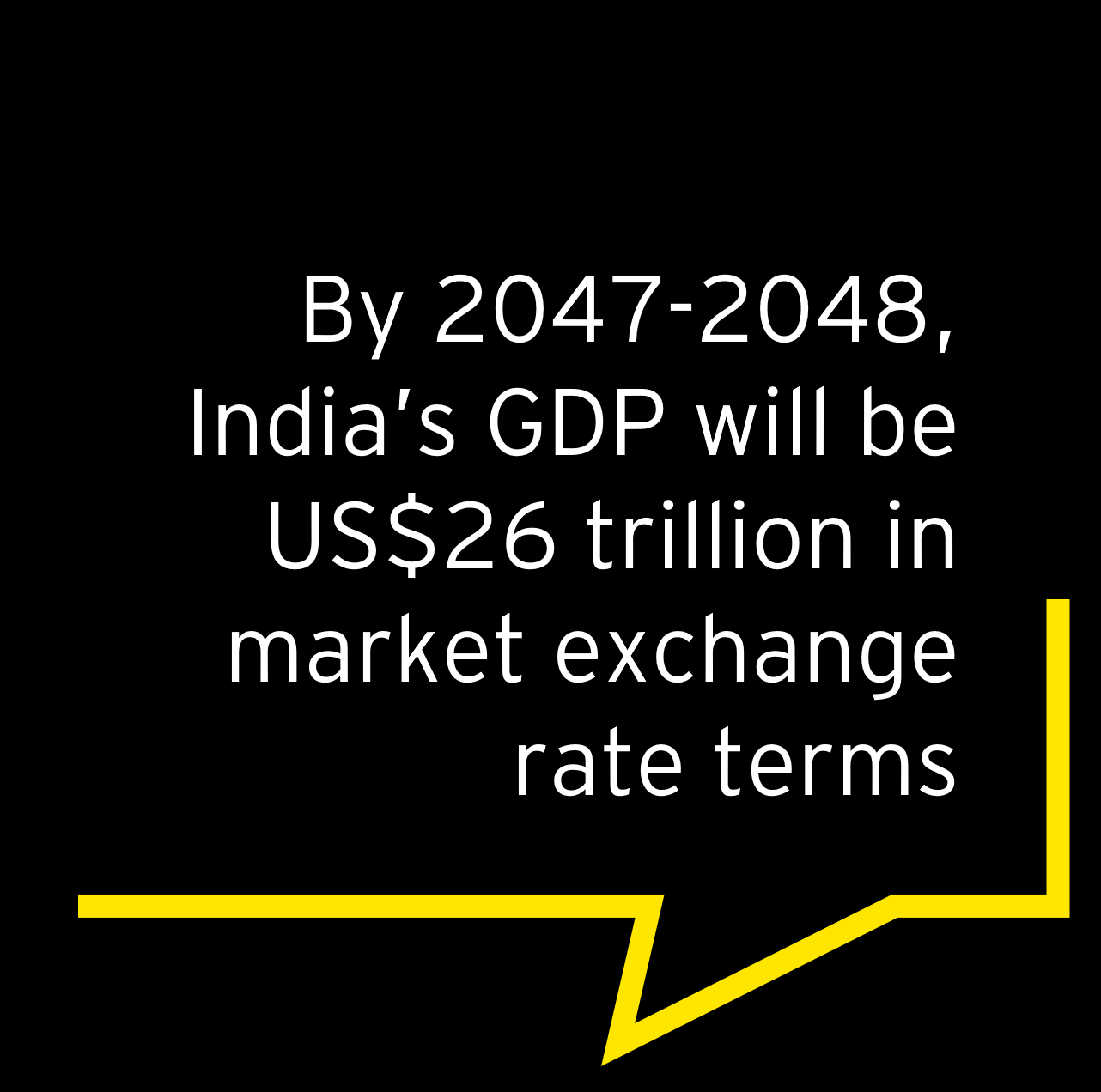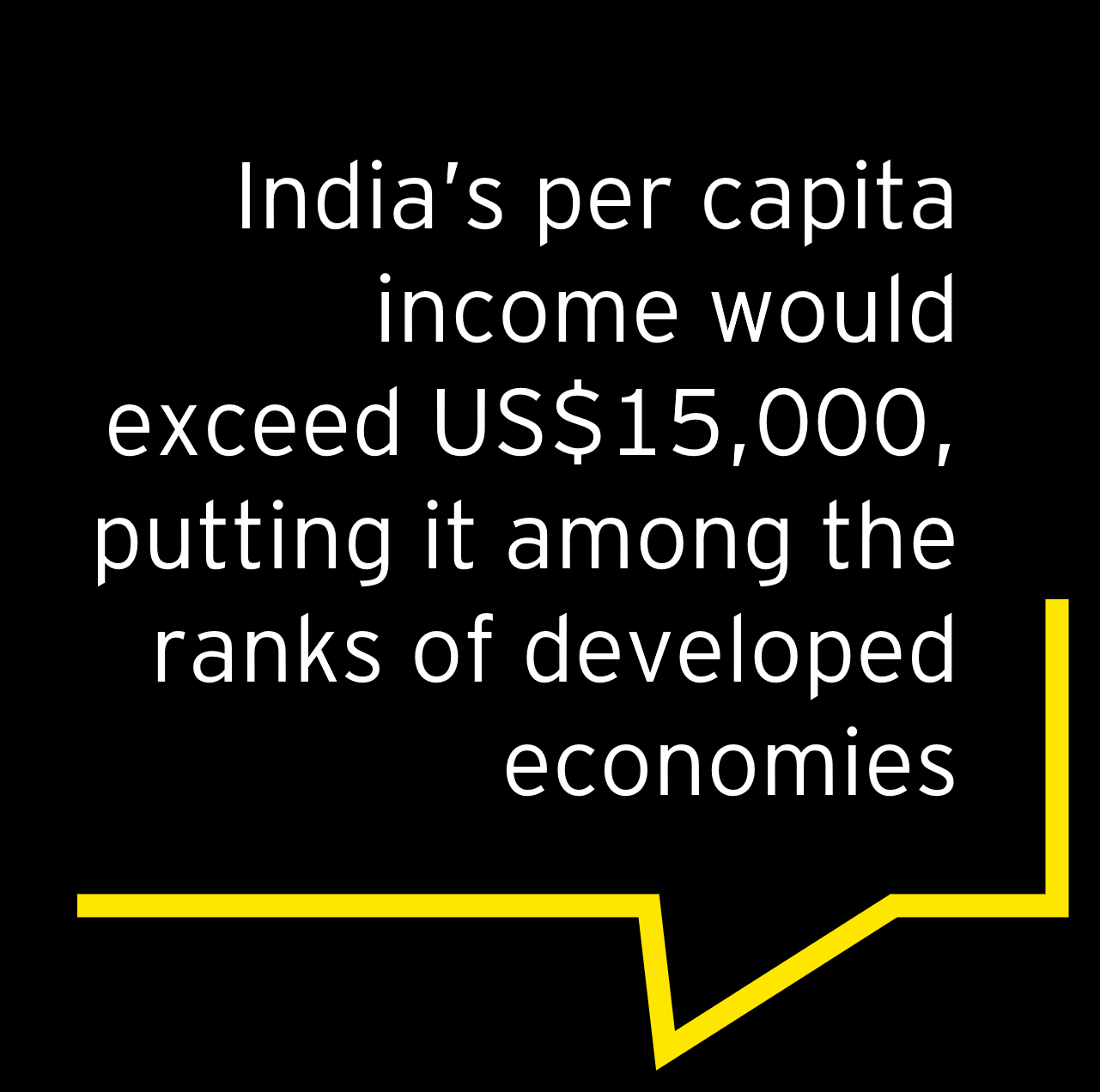EY projects



India celebrated its 75th anniversary of independence in 2022. Milestones like these not only give an opportunity to celebrate the achievements of the past but are also an occasion to envisage a vision for the country. The Government of India has set for itself the goal of becoming a “developed” economy by 2047.
India’s success is important for the world economy as it is home to approximately 1/6th of the global population. In 2023, India is slated to become the largest country in terms of population, enabling it to become the largest contributor to the global workforce for the next several decades.
The enthusiasm for India’s growth prospects is palpable given the slowing global growth buffeted by recent headwinds of unprecedentedly high levels of global debt to GDP, inflation, decelerating global population growth and plateauing global trade to GDP. These trends have been further exacerbated by rising protectionism amidst rising geopolitical tensions.
India has attained critical mass as the fifth largest economy in the world, realized primarily on account of its policies of economic liberalization, which made it more market-oriented, allowed for a greater role for private capital and in the process increased its global competitiveness. The growth projections for the Indian economy are the highest for any large economy over the coming decades.
Growth enablers
EY has recognized eight key enablers of growth that will impact sectors across the economy and play a critical role in propelling the growth engine.
India is likely to cross the critical thresholds of US$5, US$10 and US$20 trillion in market exchange rate terms in FY2028, FY2036 and FY2045 respectively.




